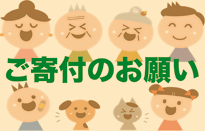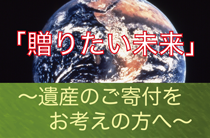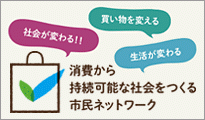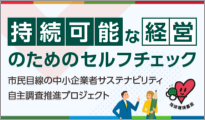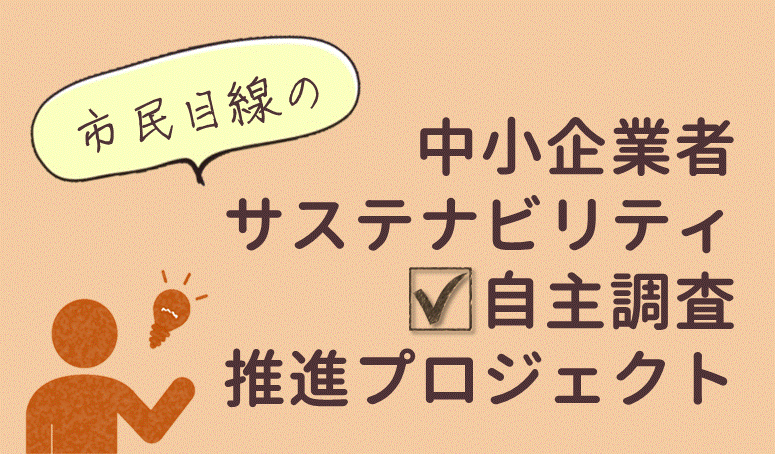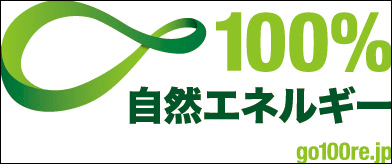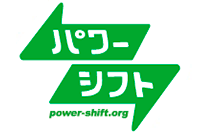21世紀、地球を、地域を、生活を、持続可能な豊かさに
CEF’s New Green Consumer Guide
カテゴリ: CEF English news | 更新日:
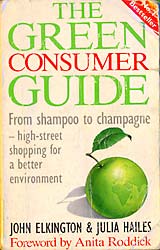 This month we’d like to look at Green Consumer Activity and how the Citizen’s Environmental Foundation has been involved in these projects, including future work. Green Consumerism started in 1988 in the U.K. with John Elkington and Julia Hailes’ seminal book, The Green Consumer Guide, which set out to help ordinary people make better choices when they purchase goods. Mr. Sugimoto of CEF was greatly impressed by the original Guide and wanted to make something similar for Japanese products and Japanese consumers. He and the CEF researched Green Consumerism and then began a study of the supermarkets in Kyoto, looking for businesses that dealt with environmentally friendly products.
This month we’d like to look at Green Consumer Activity and how the Citizen’s Environmental Foundation has been involved in these projects, including future work. Green Consumerism started in 1988 in the U.K. with John Elkington and Julia Hailes’ seminal book, The Green Consumer Guide, which set out to help ordinary people make better choices when they purchase goods. Mr. Sugimoto of CEF was greatly impressed by the original Guide and wanted to make something similar for Japanese products and Japanese consumers. He and the CEF researched Green Consumerism and then began a study of the supermarkets in Kyoto, looking for businesses that dealt with environmentally friendly products.
 The research sought out a large group of eco-friendly products: organic produce, food products without additives, products with low-temperature sterilization, eggs raised without antibiotics, soaps made without synthetic surfactants, toilet paper made of recycled paper, products sold with minimal packaging and so on. In total about 200 shops in Kyoto were researched and ranked for our guide, published in 1999.
The research sought out a large group of eco-friendly products: organic produce, food products without additives, products with low-temperature sterilization, eggs raised without antibiotics, soaps made without synthetic surfactants, toilet paper made of recycled paper, products sold with minimal packaging and so on. In total about 200 shops in Kyoto were researched and ranked for our guide, published in 1999.
At that time our guide was the first for Japan and it garnered a lot of interest with the public and other environmental groups. Several associations followed our example and in total about 100 consumer guides were published across Japan in the following years. The impact on supermarkets was significant too. Following this movement, several businesses established internal departments devoted to eco-friendly products and began to change what they sold. For example, margarine, which has health risks compared to butter, was pulled from shelves in some stores. After the first guide, we collaborated with other groups to produce a national guide to the big chain supermarkets. This was also very effective, and several stores competed to be the most eco-friendly in Japan.
In the 90s we focused on Green Consumerism, but during the 2000s we shifted to Green Purchasing Activity. This refers to the purchase of eco-friendly products in local governments and big companies. If large organizations move to greener products the environmental impact is huge and those purchases change the market as well, so we decided to tackle this new area of society after a decade of work with consumers.
Many local governments and businesses made efforts to go green, but in the end, environmental concerns were always secondary to governance or financial success. After ten years we began to take notice of changes in the consumer market. There were many more products that were labeled eco-friendly, energy-efficient or “green” but many were suspicious and furthermore, the volume of production and consumption had increased. Although we had made progress with Green Purchasing, we realized it was time to focus on consumers again.
In our second round of research we visited several Western countries to study the latest Green Consumer Activity. We found that Western organizations were very active in attacking companies and governments and they applied pressure on both to change policies and laws to protect the environment.
Unfortunately in Japan we don’t have such powerful organizations. We do have some, but many of these organizations have aging memberships and they struggle to deal with modern issues, such as the effects of consumer electronics or rapidly changing recipes in processed foods and cosmetics.
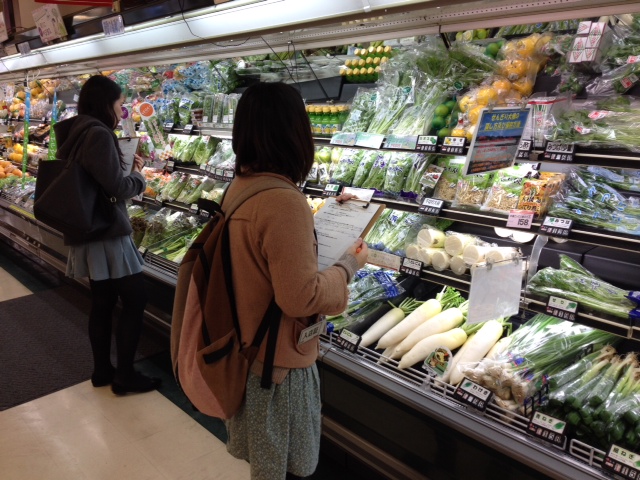 To improve this situation, we hope to empower consumers and use modern online tools to leverage our findings. As a first step we have decided to resume our research into consumer goods in the 2014 fiscal year. Last year we received funding from the Miyako Ecology Center to help us train researchers for the project and we have already investigated 25 supermarkets in Kyoto. Our preliminary criteria are as follows: selling organic goods, fish without styrofoam trays, beer in reusable glass bottles, fair trade ground coffee and organic and/or locally-produced rice. In general, over half of the surveyed supermarkets carried these products, so we are optimistic about our findings so far.
To improve this situation, we hope to empower consumers and use modern online tools to leverage our findings. As a first step we have decided to resume our research into consumer goods in the 2014 fiscal year. Last year we received funding from the Miyako Ecology Center to help us train researchers for the project and we have already investigated 25 supermarkets in Kyoto. Our preliminary criteria are as follows: selling organic goods, fish without styrofoam trays, beer in reusable glass bottles, fair trade ground coffee and organic and/or locally-produced rice. In general, over half of the surveyed supermarkets carried these products, so we are optimistic about our findings so far.
At this point we hope to set up a website for our findings, publish a guide again and make an app for smartphones. This is a huge undertaking and we have applied for funding, but if it doesn’t come through, we will still do what we can with our own manpower.
ーPerrin Lindelauf

